-
- Acuerdos de compra
- Advertencia
- Atributos del producto
- Categoria de ProductO
- Coincidencia de Recibos de Compra y Facturas de 3 Vías
- Compra
- Gestión de Productos
- Gotero
- Ordenes de Compra
- Receptores productos
- Reportes
- RequestForQuotationPurchaserOrder
- Unidad de Medida
- UnitfMeAsurectatecturaciones
- Vendorbills
- Vendormanagació
-
- Administrador
- Billofmateriales
- CREACIÓN DE DOCUMENTOS
- Categoría de equipos
- Configuraciones de WorkCenters
- CorrectiveMaintenancerequest
- Creando Merman Oferta
- Creando una orden de reparacia
- Enrutamiento
- Fabricación
- Gerencia
- Gerencia de Reparacia
- Gestión de la Calidad
- Gestión del Ciclo de Vida del Producto
- HowtounBuildOrder
- Manejo de Mantenimiento
- ManufacturingOrderManagement
- Mermanes de Creendo
- Nobildaproducto
- Orden
- Planificación de Trabajadores
- Planificante
- Preventivemaintenancerequest
- Productora de administración
- QualityControlpoints
- Reportes
- Subcontratacia
- WorkCenters y Rutings
- Workcenters
-
- Ajustes de Inventario
- Anuncios
- Capacidad de Productos
- Categorizacia de productos
- Configuración del producto
- Confirmación de Correo Electrónico de Entrega
- Consiguio un
- Coste de Aterrizaje
- Entrega
- Gestión de Almacenes
- Horario de Programació
- IntegratingthirdPartyshipper
- Inventario
- Operaciones de inventario
- Paquetes de Entrega
- Parpadeo
- Planificador
- ProductVariants
- Ratidrategas
- Reglas y rutas
- Reportes
- SMSCONFirmationAtDelivery
- Ubicacia
- Unidades de Medida
Odoo 14 book
Customer Invoice to Payments
Depending the business and the applications used by the user you can take different approaches to automate customer invoice creation in Odoo. Usually, draft invoices are made by the framework (with data originating from different reports like sales order or contracts). In these cases, accountants will only have to approve/validate the draft invoices and send the solicitations in batch (by customary mail or email).
A user can create a customer invoice directly from the dashboard by clicking on NEW INVOICE button. The user can also go to the CUSTOMERS section in the accounting tab and select INVOICE option
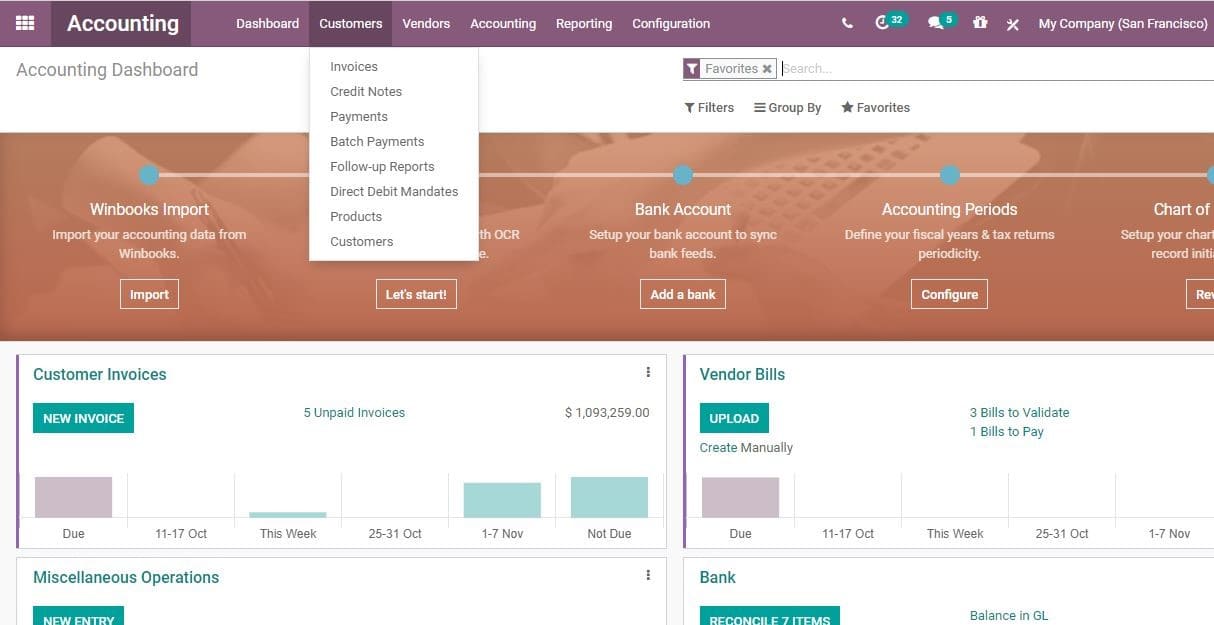
The user can click on the NEW INVOICE button first. Then the user will be navigated to a new window with a creation form like below.
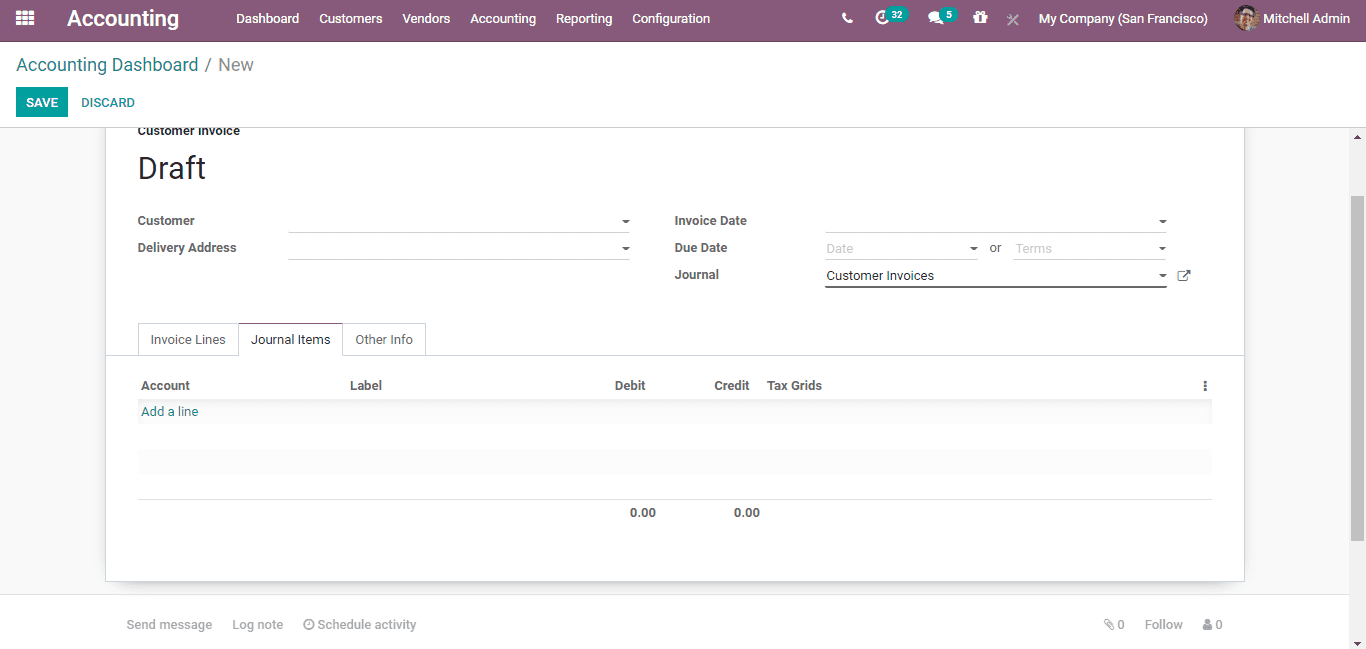
The field comprises of the following attributes:
Customer: The contact of the customer by name, TIN, Email or Internal Reference.
Delivery Address: Delivery Address for the Current Invoice
Payment Due Date or Terms: If the user is using payment terms, then the due date will be automatically computed at the generation of accounting entries. On keeping the payment terms and the due date empty the payment can be made directly. The payment terms will enable the computation of several due dates, for example 50%now,50%in one month.
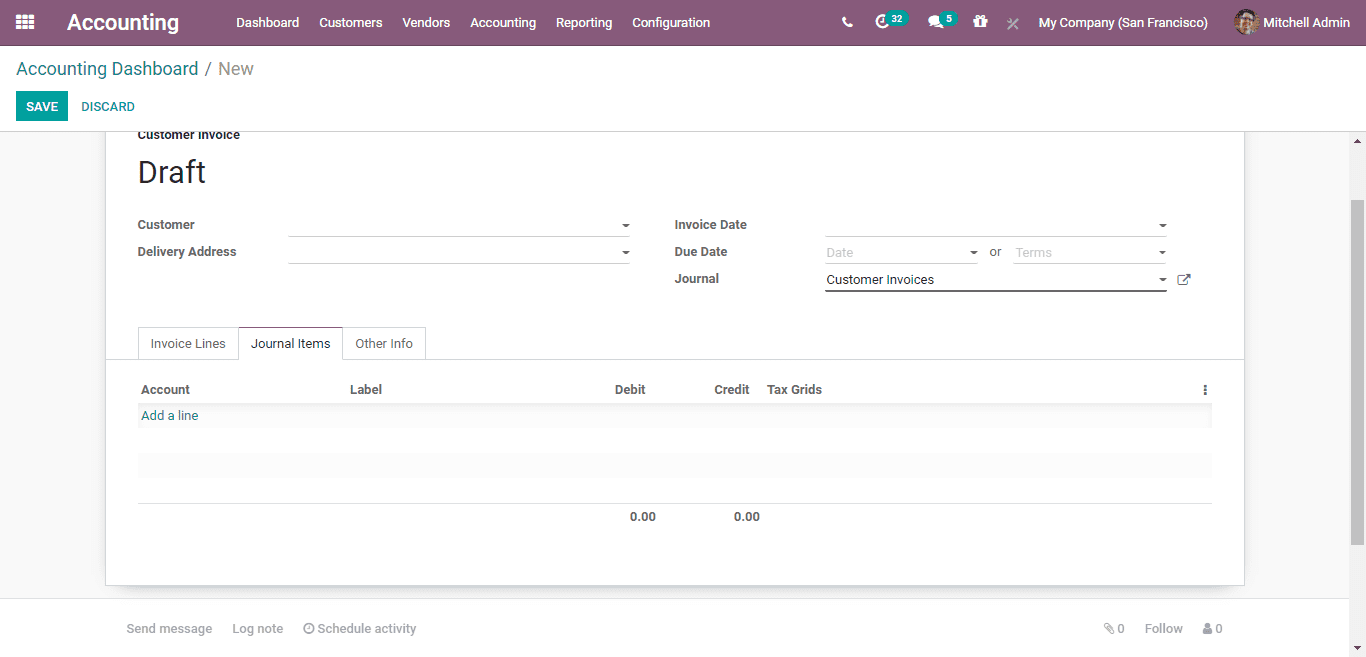
The user can also set the Payment terms via defining a date.
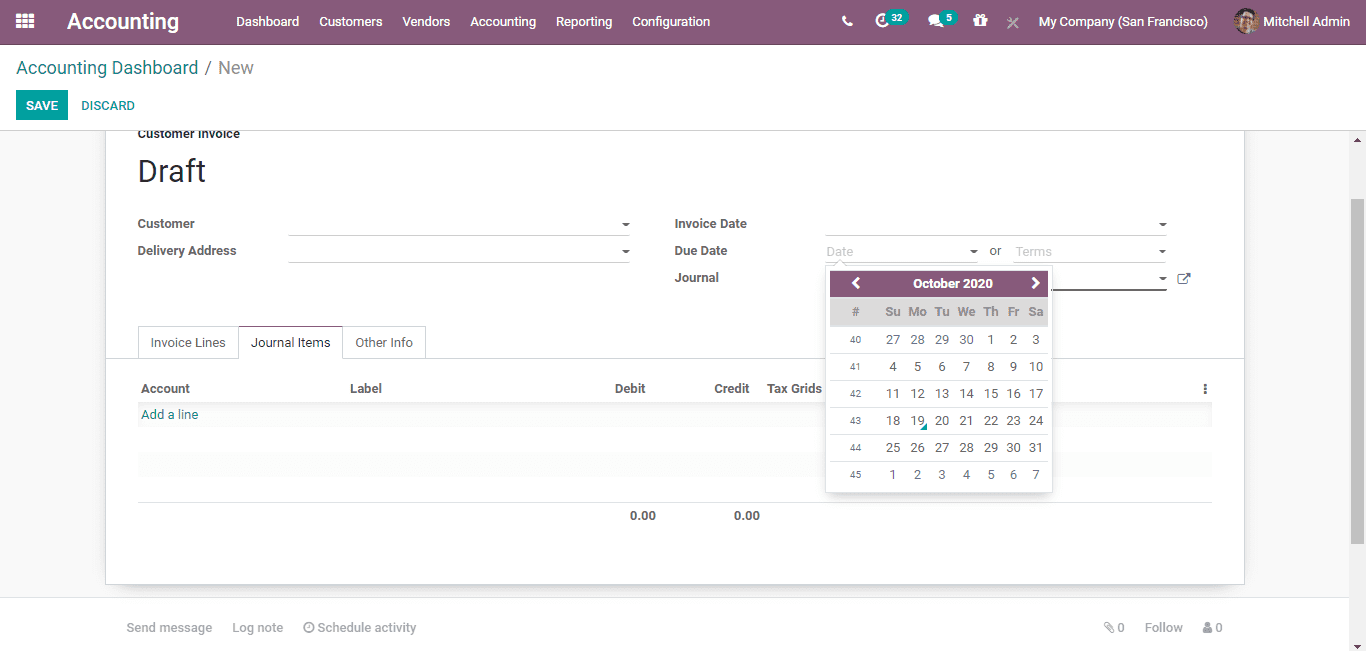
Invoice date: The user can keep it empty if you want to use the current date.
Sales Person: Assign the sales person authorized for deal.
Journal: Here you can define the Journal authorized for the deal.
Company: Company relevant to this Journal.
Currency: Currency used for the transaction.
Under Invoice Lines Tab, a user can add the products the customer desires to buy. The user can also add a description if any under the label section and the account you configured for the deal.
After entering all the details,
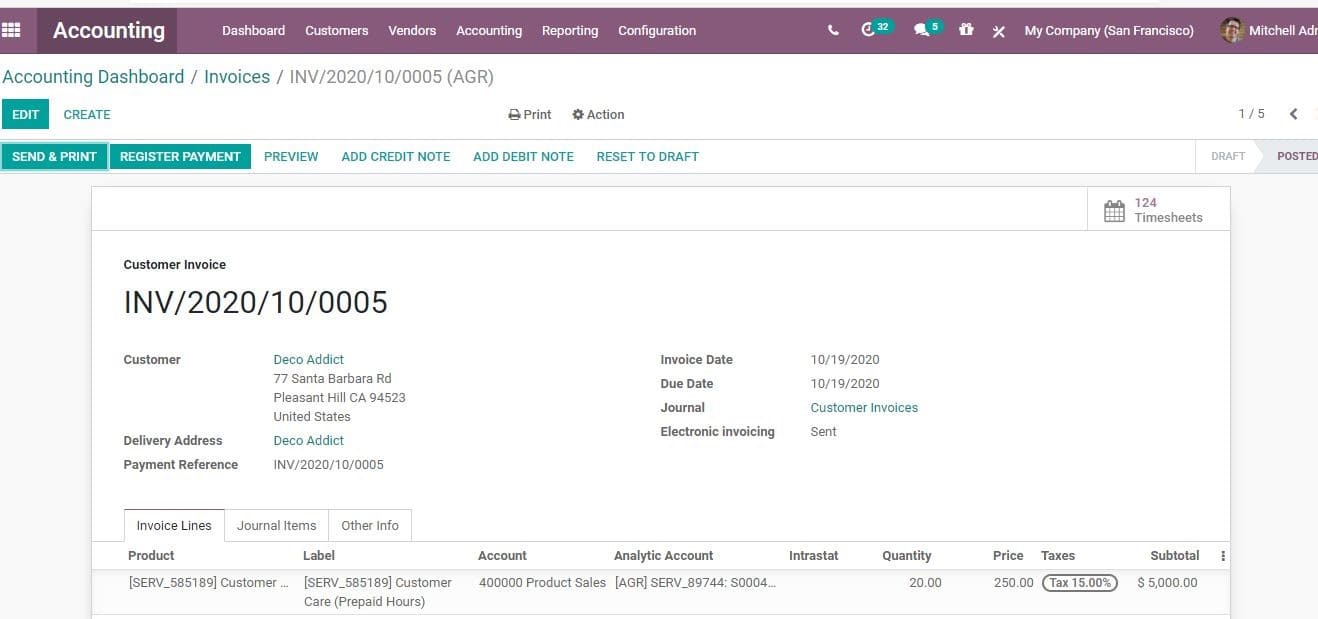
Now, the user can register payment send create payment.
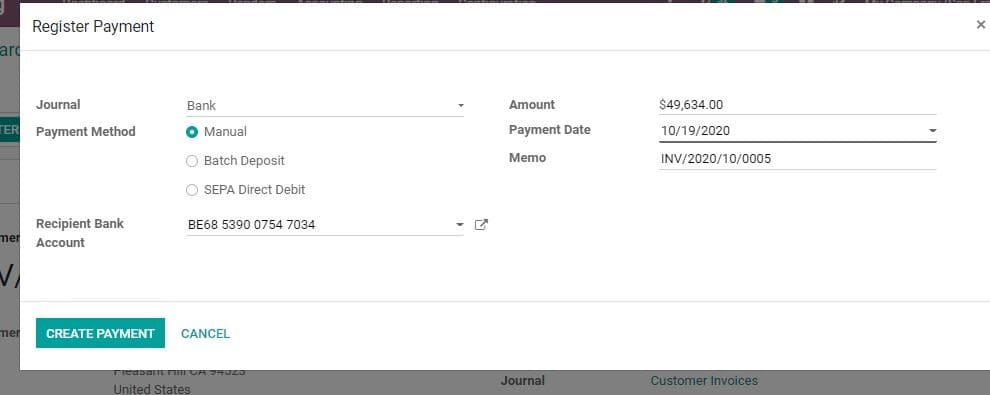
After completing this, click VALIDATES. Now you can see that the invoice has been paid for.
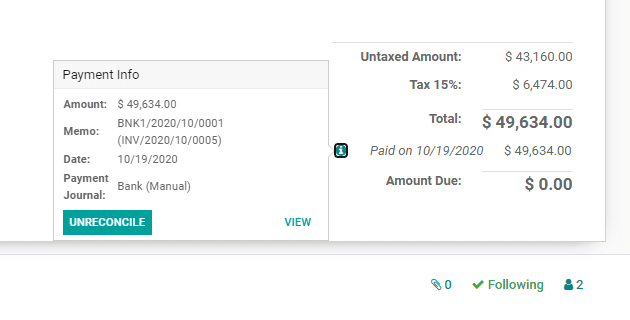
Near the paid on date, you can find a small green icon. Now click on this icon and then you will get acquainted with more information about the payment. The user can see that the payment invoice has been reconciled together. If the user wants to unreconcile, they can do it by clicking UNRECONCILE.
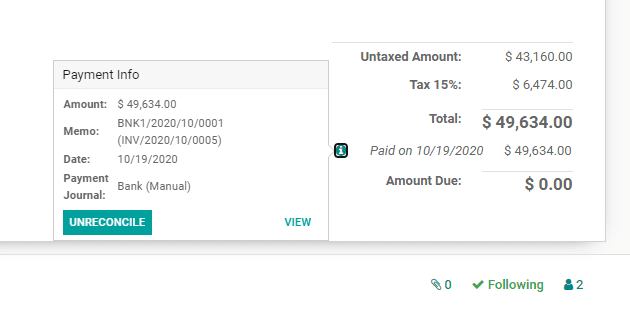
In case, the invoice payment is partial, you get the payment information citing the amount due.
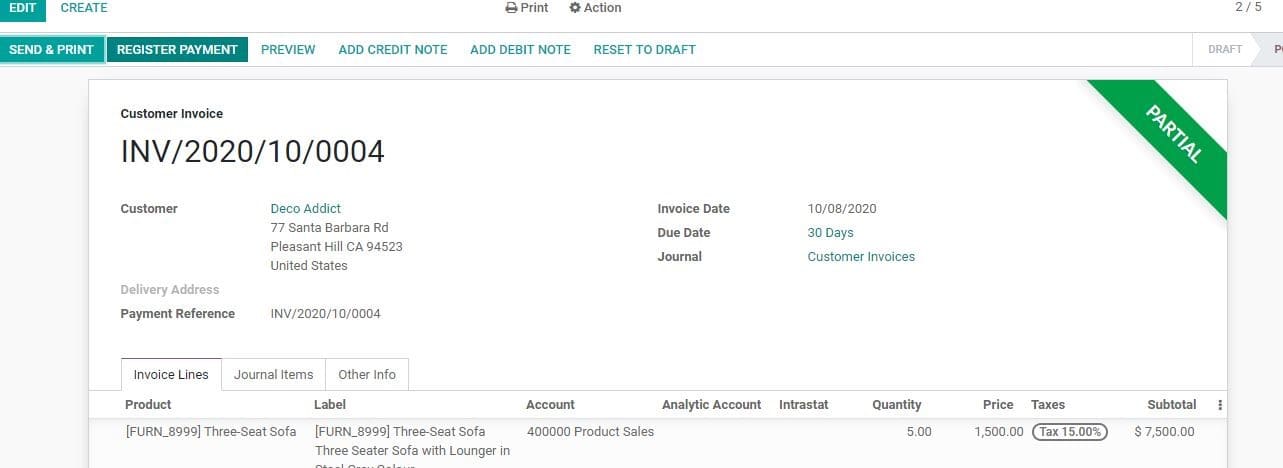
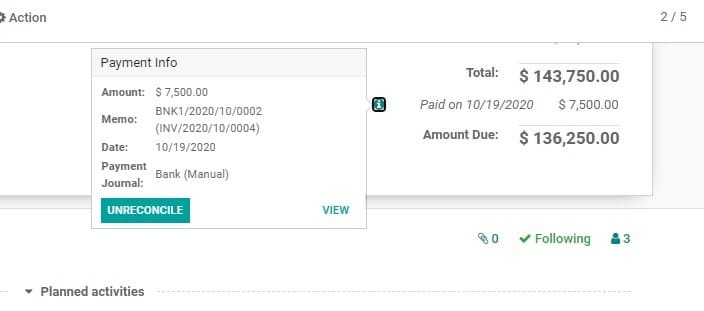
Now, click the PREVIEW button on top to get the website view of the invoice.
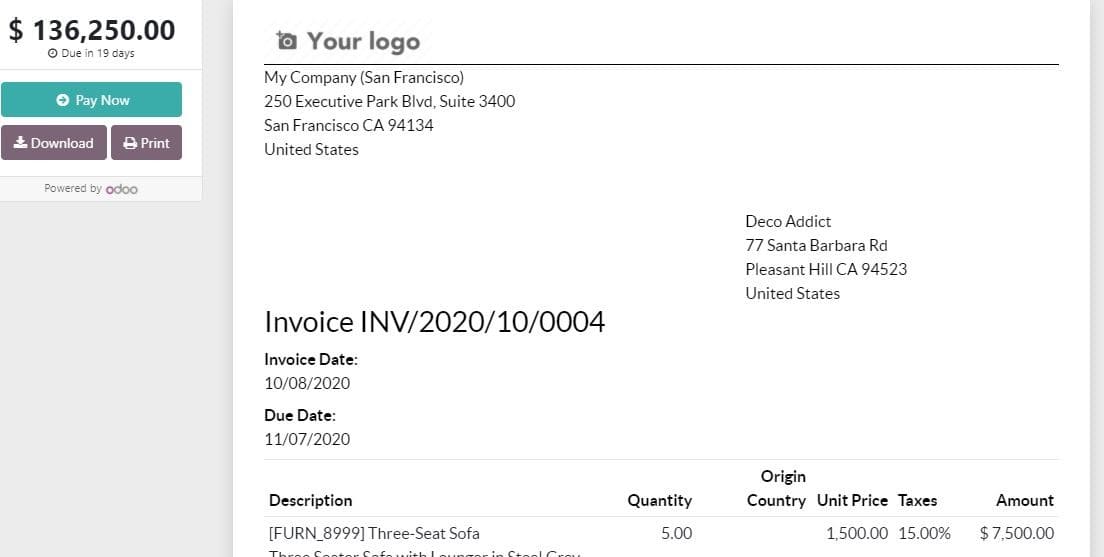
In the next step, go to Accounting> Journals> Sales. Here, you can see the journal entry that was automatically created for the invoice.
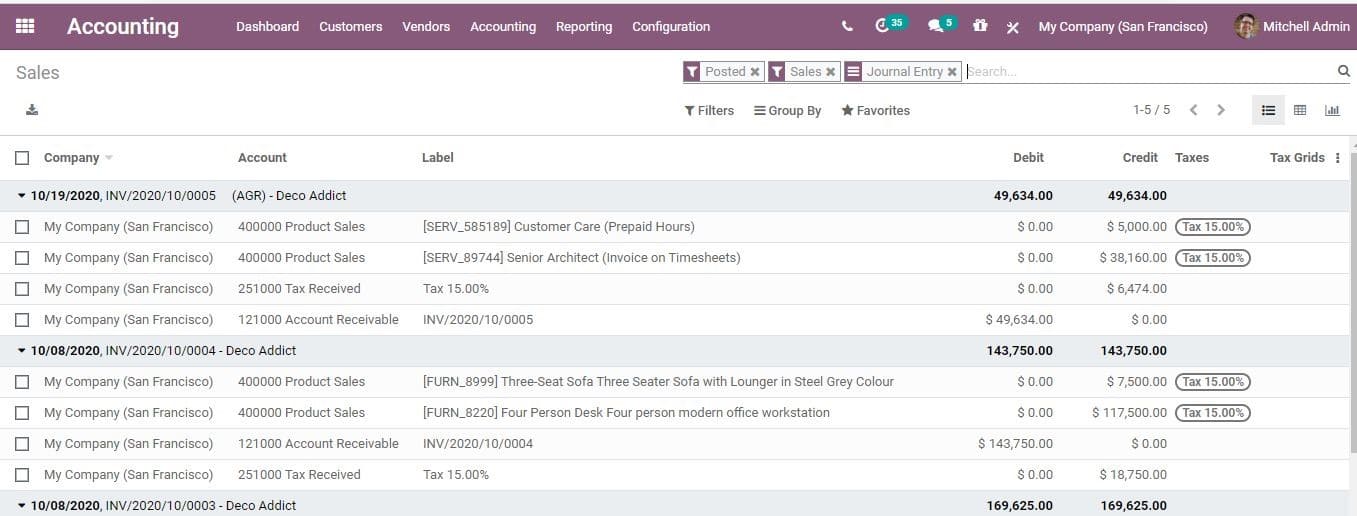
Then, click on it to get journal entry with debit and credit balanced.

Now, go to Customers> Payments
Here, the user can see the Invoice Payment details including date, invoice name, journal, payment method, customer, amount, status and the company.

It is from here that you can access the corresponding journal items and also the invoices.
On clicking the journal item, a user can find the details of the client payment. The debited about and the credited amount can be viewed. Amount receivable can also be viewed from here.

The balance between the CREDIT and DEBIT is also there.
Reporting
Aged Receivable Balance
To get a rundown of invoices, a user will have to go for Aged Receivable report, under the reporting menu.
Configuration
Reporting > Partner Reports > Aged receivable.

You can print this straightforwardly to Excel or PDF anytime to get a precise idea of what you see on the screen.
To view all Journal Entries,
Configuration
Got to Accounting-> Accounting->Journal Entries
You can create the journal entries manually here.
AS seen above the filters by default would be MISSCELENEOUS OPERATIONS.
Now create a new journal entry by clicking the button CREATE.